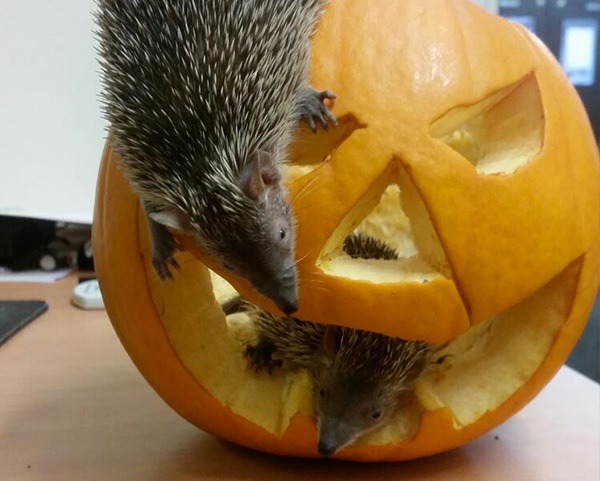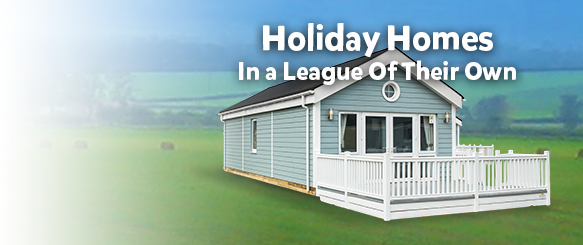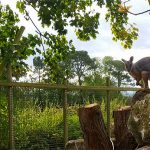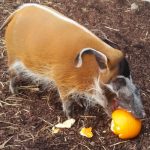It’s Pumpkin Playtime!

At Flamingo Land, we have been very busy with Halloween activities! One which was on offer to the visitors was to carve a pumpkin. This proved to be a very popular family activity as both adults and children were able to get involved. We found that for a lot of adults it was the first time for them carving a pumpkin! Once the visitors had carved the pumpkin they could either take the pumpkin home with them or leave it here for us to give to the animals. Many of our guests staying at the Holiday Village decided to take theirs with them to decorate their caravans and log cabins.
The pumpkins which were left for the zoo animals were distributed to our mongoose, hogs, lemurs, lorikeets, snails and tenrecs. This is the only time of year the zoo animals receive pumpkin therefore it is a great form of enrichment for them. The appearance and smell of the pumpkin is very novel, therefore attracts the animals’ attention and many are curious and go to investigate what the mysterious object is! Depending on the animal, some may choose to eat it, some will play with it, whilst others will climb on it or completely destroy it. Regardless of how the animals respond to it, it provides them with something new to investigate during their day.
The picture shows our lesser hedgehog tenrecs, Raymond and Bruno, exploring their pumpkin. Tenrecs are generally found in rainforest areas in Madagascar, though a handful of species have adapted to the arid spiny desert in the South-West of Madagascar.
Our tenrecs are one of the species found in rainforest areas which means they like their home to be relatively warm and humid with lots of places to hide – in their set up here they have a heat bulb and lots of logs to climb up or hide under and we spray the air with water twice a day to keep a nice humidity level as well. They are omnivores with most of their diet being made up by insects such as locusts, crickets and mealworms which is what we feed them here, they also have cat food and various fruits and vegetables occasionally as well, to make sure their diet is as varied as it would be in the wild.


